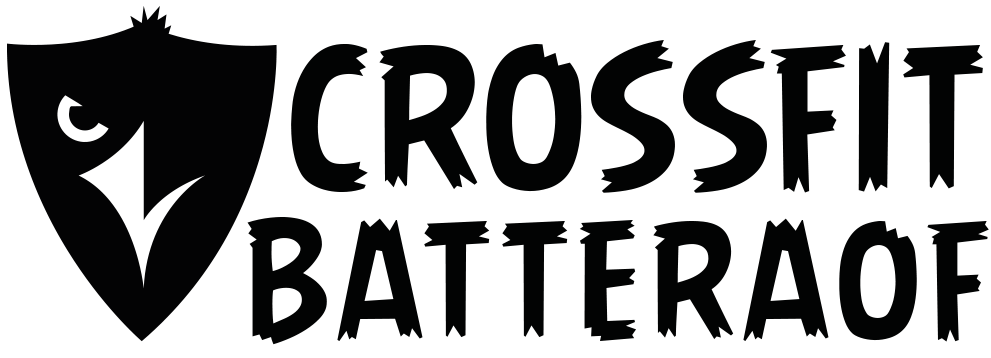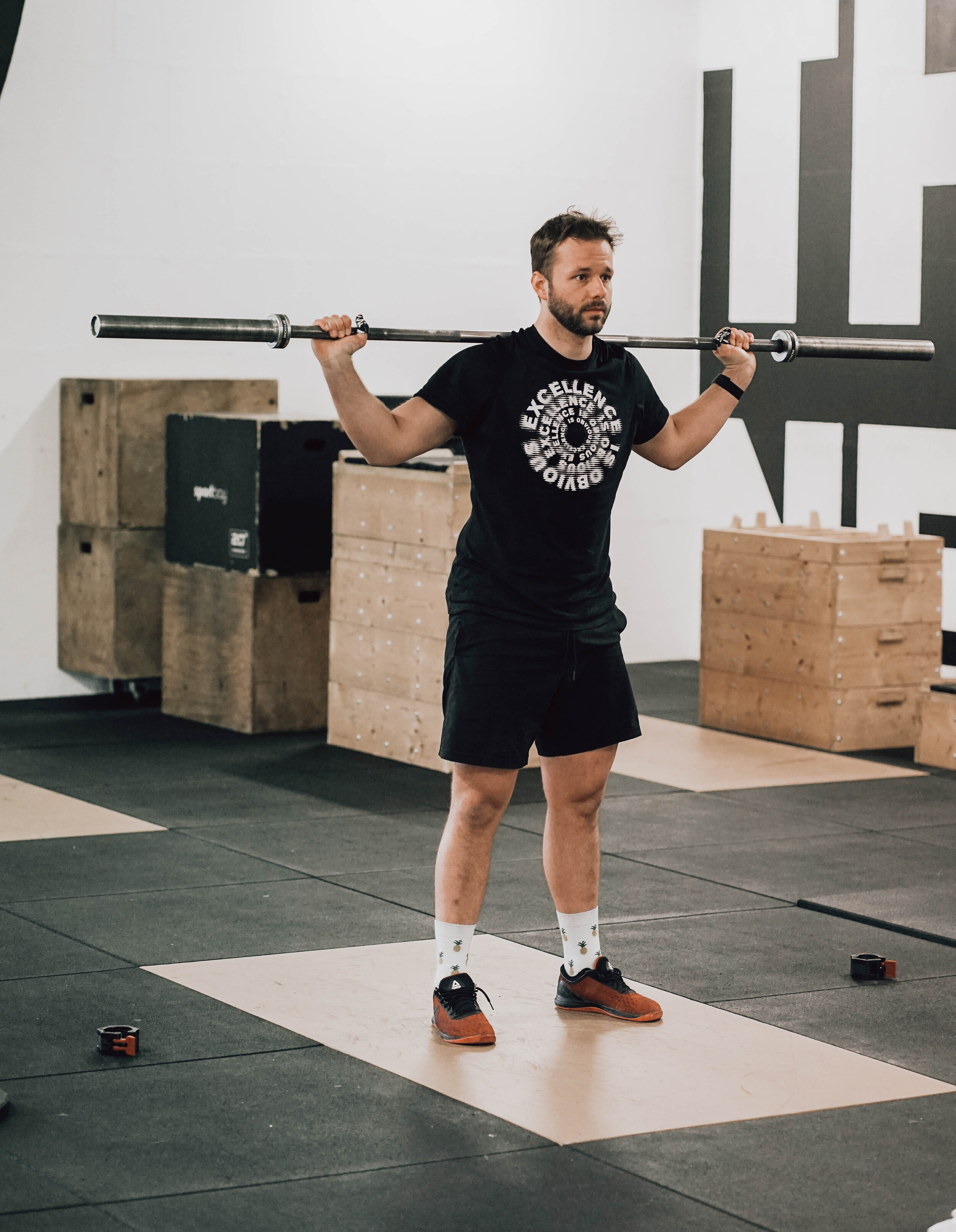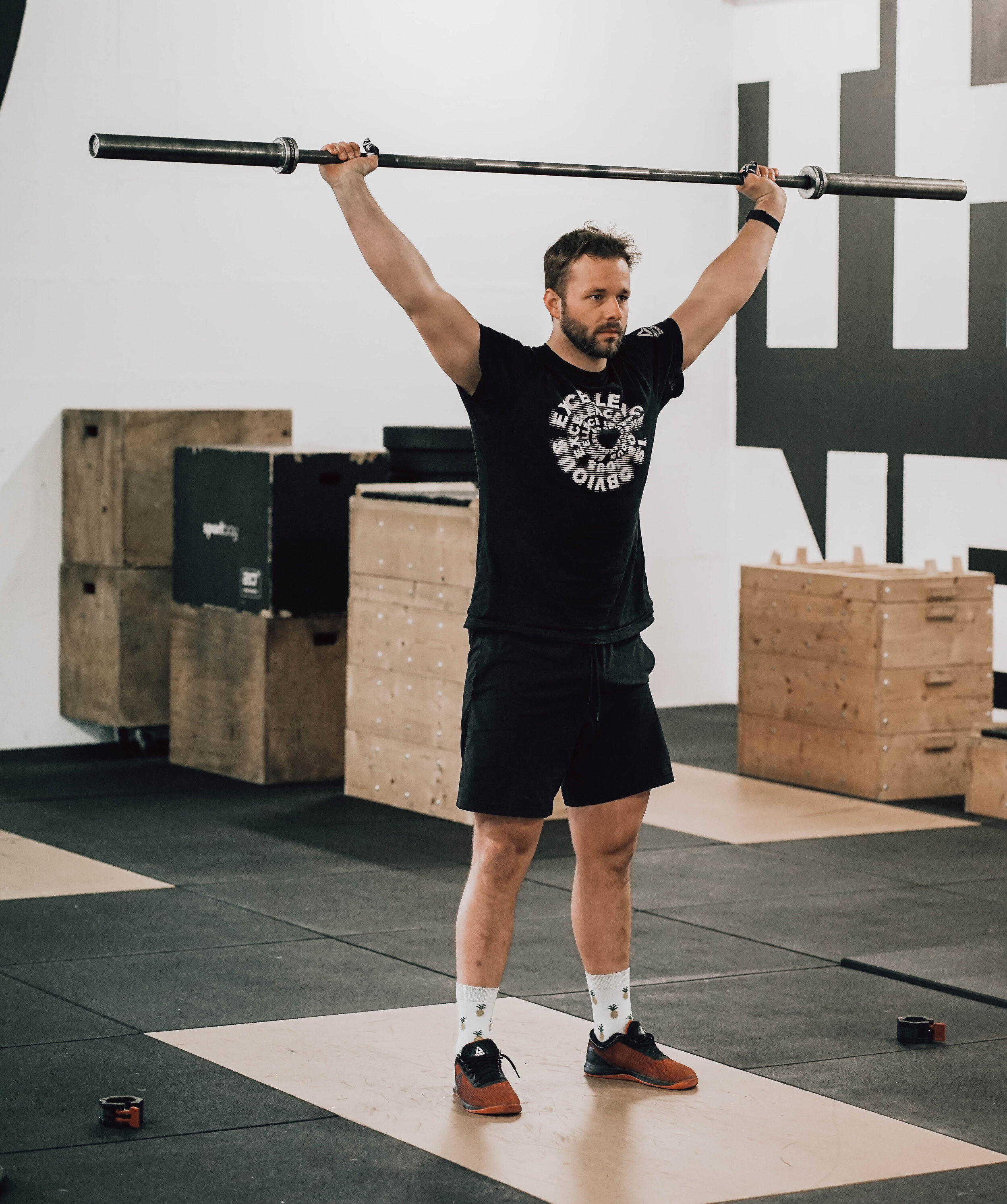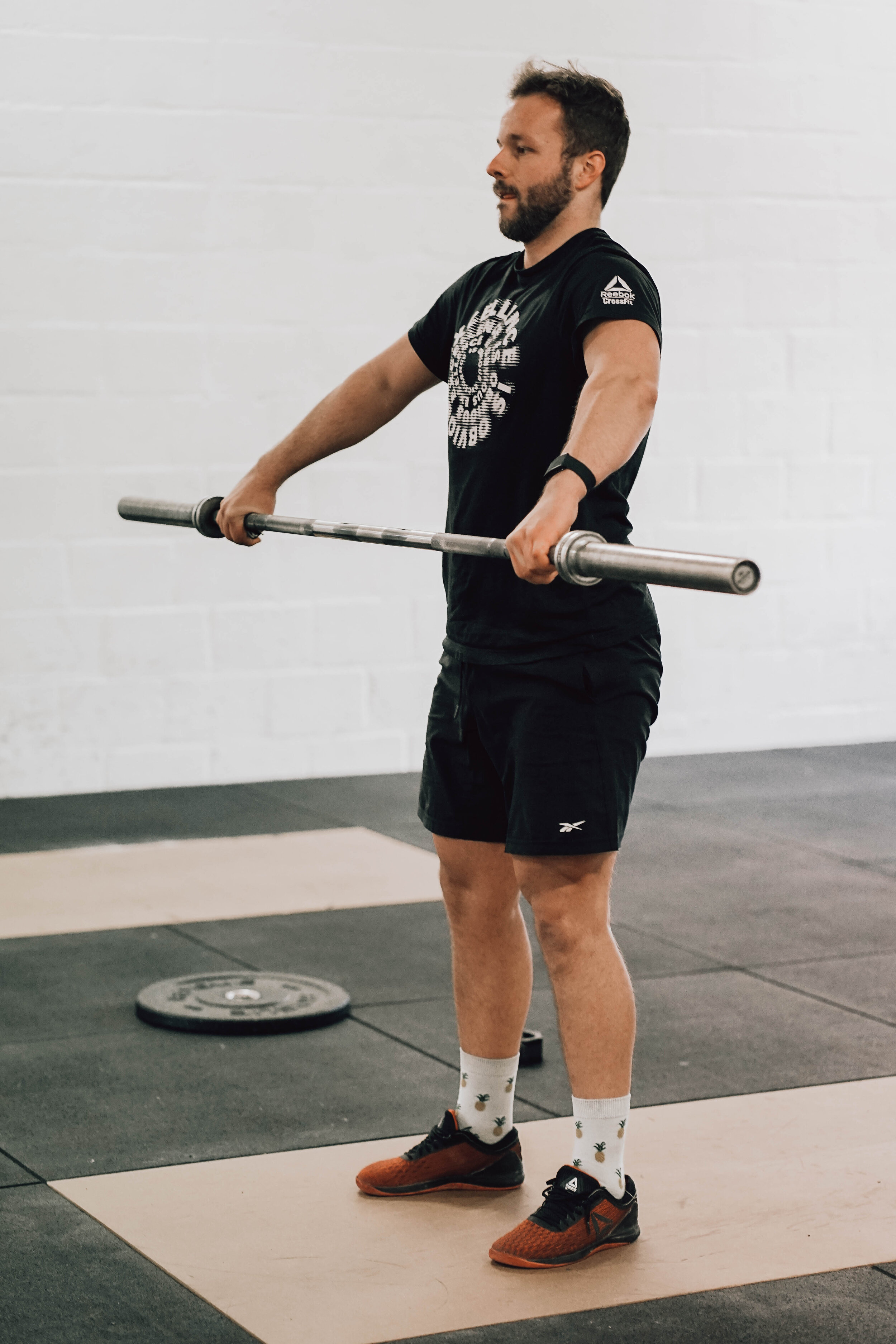THE SNATCH
This is a guide that will explain some of the fundamental points of performance, so that you can learn or improve your SNATCH especially in the context of functional training.
What is the snatch?
The snatch is a lift primarily used in the sport of Olympic weightlifting. The lift consists of the athlete lifting a barbell from the ground to overhead in one motion. As straightforward as it seems, this lift is very intricate which explains why so many athletes and coaches devote their careers to perfecting this exercise.
In the context of functional training, it’s not enough to be able to lift a lot of weight, you must be able to execute tens of reps…for time!
How to approach learning the snatch
The snatch is very demanding in that there is a lot of mobility, skill, and technique involved especially if you’re hoping to make those big lifts. The good news is that we can simplify this movement by breaking it up and practicing its parts. We can also simplify by prioritizing some of the factors involved: First you must familiarize yourself with the positions. Next, drill the movements and finally, speed it up. As you progress, you can gradually work with larger loads, more volume, and faster execution but it’s crucial to understand that you cannot skip steps when it comes to this process!
Risking injury to be able to lift heavier weights is not worth it
Besides, the best lifters in the world have the mechanics, stability, and control to move 100 kilos as if it were 20.. This is the result of consistent, intentional practice, warming up sufficiently, and spending most of their training working with loads that they can control.
If you’re new to snatching, you can start with PVC pipe, a broomstick, or a training bar working up to using weights that you can move with ease. If you’re an intermediate lifter, you’ll want to work within 50% to 80% of your personal best. As long as you prioritize quality over kilos you’ll continue to improve.
Dissecting the snatch positions
We should think about mastering this Olympic lift as a pyramid, the base would be your starting position. Proper positioning is an essential aspect of training the Olympic lifts, a good base facilitates all the other positions. Improper positioning in a Snatch can lead to an improper movement path and failed attempts and/or injuries.
Something that a lot of novice lifters overlook is the importance of investing time in mobility work to support proper positioning. We tend to think that by maxing out in every session, we will become more comfortable moving heavy weights and therefore we will be able to lift more. Practice makes perfect, right? To an extent that’s absolutely true, however it’s necessary to note that without adequate mobility, it is impossible to achieve the correct positioning and thus impossible to perform the movement correctly. Assuring that you have the ability to support the bar overhead with a wide grip, and safely perform an overhead squat you are well on your way to training the snatch.
We can train the Snatch in its entirety but also train specific parts of the lift to be more proficient.
Let’s look at some of those parts and positions.
snatch grip, widtH and set up
Standing tall, hold your bar with your hands wide apart so that it reaches right to your hip crease (you should be able to bend at the hip to support the bar).
The bar should be right above your pubic bone as you keep your arms straight. It’s worth memorizing this hand positioning so that we make contact with the bar at the same point every time we Snatch.
Hook grip
Use a hook grip; grab the bar with your hands, wrapping your thumbs first over the bar and your fingers over your thumbs.
This helps to improve your grip and is crucial for pulling heavy loads. It’s a good idea to practice using a hook grip from the very beginning. This is the best way to get used to the mild discomfort that many face when they begin to use it.
Hook grip
Set Up Position
Snatch Set Up Position
Keep in mind that there are as many different “correct” starting positions as there are different body types. Individualized adjustments must be made and may even change as the athlete advances. Height, body proportions, and mobility are just some of the factors that influence how the lifter will set up for their snatch.
Generally speaking, the best stance is one that will allow you to stay balanced on your midfoot and maintain a straight back as you stand with the bar. In the start position, your hips should be low (just above parallel) and your shoulders inline or slightly ahead of the bar. Knees out, chest up, arms straight and look at the horizon.
PARTS OF the SNATCH
Snatch Deadlift
This exercise helps to build strength and awareness in the starting phase at the snatch, known as the first pull.
From your starting stance, push your feet into the ground to reach a standing position.
As the bar passes your knees, send your knees back so that they are in line with your ankles.
Although this drill has ‘deadlift’ in its name, it is not a hamstring-dominant exercise.
The angle of your back should change very little meaning the your hips will stay lower than your shoulders at all times.
Snatch (High) Pull
Similar to the Snatch Deadlift exercise but more dynamic.
This accessory movement is also commonly used after the main lifts to practice strength, power, timing and balance.
Beginning in start position extend the lower body while keeping your arms extended and shoulders hovering over the bar.
Keep the bar close and guide it towards your waist as your knees begin to open.
Accelerate the bar by extending your hips aggressively, allowing to bar to make contact with your hips.
Keep your chest high as you take advantage of the momentum to shrug and pull the bar just below the chest.
(Hanging) Hip Extension
This phase in the snatch is one of the most difficult to master. We must learn to be patient yet aggressive, timing the hip extension and point of contact perfectly to be able get under the lift at the right time.
Hip Crease
Begin with the bar just above your knees.
Your knees should be slightly bent and your shoulders just ahead of the bar.
You should feel a stretch in your hamstrings.
Keep your abs and lower back tight as you open at the hip bringing the bar up to your hip crease.
Avoid banging the bar against your thighs, but keep it close enough so that as you extend your hips, it brushes your hip crease.
This is the contact point where the bar will accelerate so quickly that you will be able to transition the bar overhead.
When performing the lift, the brush of the bar has to be extremely precise and explosive, but as a drill, it’s a good idea to start slow for the sake of accuracy.
Behind the neck Snatch grip press
This is a great exercise to strengthen the overhead position. Starting with the bar behind your neck (supported on your traps), hold the bar with your snatch grip and press it up overhead.
Be very careful not to press forward. The bar should end up in alignment over your body with your arms locked out and just behind your ears.
If the bar is too heavy for you, you can do this exercise using a PVC pipe, an empty bar, or you can adapt the movement by using a slight pulse from your legs as if performing a push press.
Overhead Squat
The overhead squat is the most basic snatch receiving position strength exercise.
Overhead Squat Bottom Position
Start with the behind the neck Snatch grip press
When the bar is overhead, position your feet in a comfortable squat stance and descend until your hips are lower than your knees.
As you go down, be sure that the bar doesn’t begin to drift forward in front of you nor too far back behind your head.
The torso should remain vertical.
You should be stable here, able to comfortably support the bar and reach a full squat position with your hips below your knees.
Return to standing with the bar still pressed out overhead.
How can we perfect the snatch
Now that we know how to set up and where the bar needs to go, we can practice getting there. For those who are starting out, slow and lightweight is the way to go. Going slow and working with less load will help you stay conscious of moving correctly and maintaining the correct bar path.
Hang Snatch Position (Low/Just above the Knee)
It’s a long way from the ground to overhead so it’s recommendable to shorten the range of motion of the snatch until we are getting to those correct positions every time. This is also a good way to fix any bad habits that appear when snatching at full speed.
Here are the exercises to practice in respect to this method;
Hang Muscle Snatch
This lift combines the previously mentioned hip extension drills into one fluid movement.
The hang muscle snatch can be practiced with lighter weights to reinforce bar positioning and upper body mechanics or practiced with heavier weights to strengthen the turnover:
Start in the hang or launch position: the bar is just above your knees and your shoulders hang in line with the bar.
Extend your knees and hips to get the bar overhead.
As we do this exercise think about pulling the bar up with your upper body as the bar approaches your chest level and then pushing upwards with your arms to initiate the lockout.
The movement ends with the bar overhead and the entire body extended.
Make sure that the bar doesn’t swing out in front of you. Try to maintain a straight trajectory from hang position until it arrives overhead.
It’s important to keep the bar close throughout the muscle snatches and to perform the movement focusing on positioning and extension rather than on speed.
Hang Power Snatch
The setup is the same as the previous exercise.
Just as in the hang muscle snatch, the extension of the body and violent hip extension is the way to transfer speed and momentum to the bar.
In the power snatch however, just as your body reaches full extension, drop under the bar landing quickly with slightly bent knees and a vertical torso.
This receiving position can vary. Generally, catching the bar in a squat at any height above parallel constitutes a power snatch as opposed to a Squat snatch.
Hang Squat Snatch
Again, we are looking for the same setup as in the hang muscle and hang power Snatch variation however now we change the reception by catching the bar in an overhead squat/bottom position. One of the challenges here is to maintain your body extension and the height of the bar. This is what ensures that you will have enough time to get under the bar and receive it rather than having it crash down on you.
Considering the muscle and power variations, a squat Snatch has a longer range of motion and can be trickier to perform. For those who are new to snatching or who have limitations with their overhead squat, it’s recommended to catch the bar as in the power snatch and from there, ease into the bottom of the squat.
Lifting from the Floor
Now that we’ve trained in a shortened range of motion, we can start to complicate matters by incorporating full lifts from the floor. Starting from the floor gives us the opportunity to take advantage of our leg strength and create more momentum which can result in lifting heavier weights. On the other hand, when there is more distance between the bar’s start point and the hip extension, there’s more room for error.
Snatching from different start points (hang, from the floor, below the knees, from blocks just to name a few) is a really good way to get a better understanding of the mechanics and timing involved with making the lift.
Whether it’s a muscle, power, or full snatch the first pull will start the same: with your feet!
First, you must establish a centre of gravity and maintain your balance as the bar moves.
The pull from the floor should be fluid but does not need to be fast.
Focus on keeping your core, glutes, and back strong as you extend correctly.
Just as in the snatch grip deadlift, your back angle should change very slightly until the bar arrives mid-thigh.
Push off from the floor, drive through the hips, and jump under the bar.
speed stability drills
Now that we have a better grasp on the positions that we need to hit we can begin to apply some speed and explosiveness. This is absolutely vital if we want to lift heavy. We can develop speed under the bar using the following drills.
Behind the neck snatch grip jerk
With the bar behind your neck, we must first dip in order to create momentum.
Bend your knees slightly out towards the sides to keep a vertical torso.
Load your legs in the dip and then explode upward to drive the bar overhead and lockout as you aggressively jump into your catch position.
Snatch balance
This is like the previous exercise with a little more emphasis on footwork.
We begin with the bar behind the neck, a short and fluid dip, powerful drive, and an explosive catch.
From the catch position, ride down into an overhead squat. This is our receiving position.
Your feet in the catch position should allow you to directly ease into your overhead squat without having to make further adjustments.
Drop Snatch
This receiving position drill is a little more advanced than the snatch balance because it eliminates the advantageous use of momentum. We must be able to get under the bar as quickly as possible without the initial dip from the previous two exercises.
With the bar behind your neck, punch the bar up as you drop/squat down into your receiving position.
The focus of this exercise is to practice speed while entering the overhead squat without compromising the stability necessary to lock the bar out overhead.
When performing this exercise, think about pushing your body down from the bar and not the other way around.
common mistakes
We’ve seen quite a bit about what we should prioritize and how we should move, but sometimes we need to consider what to avoid.
Let’s have a look at some of the most commonly seen mistakes for athletes training the snatch.
Hip Banging
Hip banging
Yes, getting to the contact point is an important part of the snatch but there’s a fine line between letting the bar brush your hips and hitting it to home base. As you ascend with the bar, activate your lats to keep it close. This way, when your body reaches full extension, the bar will maintain a straight trajectory and continue to rise without going forward. Practice this by lifting from high blocks or performing hang pulls/snatches.
Too early / too late…
Fortunately, we can use tempo in our drills to solve most timing issues. Rushing your hip extension? Slow it down. Early arm bend? Slow it down. Shooting your butt up too early in the first pull? You get the idea.
Drill it often and slowly with light weight until you cannot fail. We can remedy many problems by using the following:
Early Arm Bend
If you’re not lucky enough to have a coach or trainer who oversees your training sessions, you probably do have the next best thing, a camera and Internet access. Do your research and be your own coach! Record yourself (it helps to see it in slo-mo), and analyze your lifts paying close attention to habits or errors. Then immerse yourself with videos of world class Olympic weightlifters and functional fitness athletes performing quality reps. If you want to execute good lifts, you must know what they look like.









